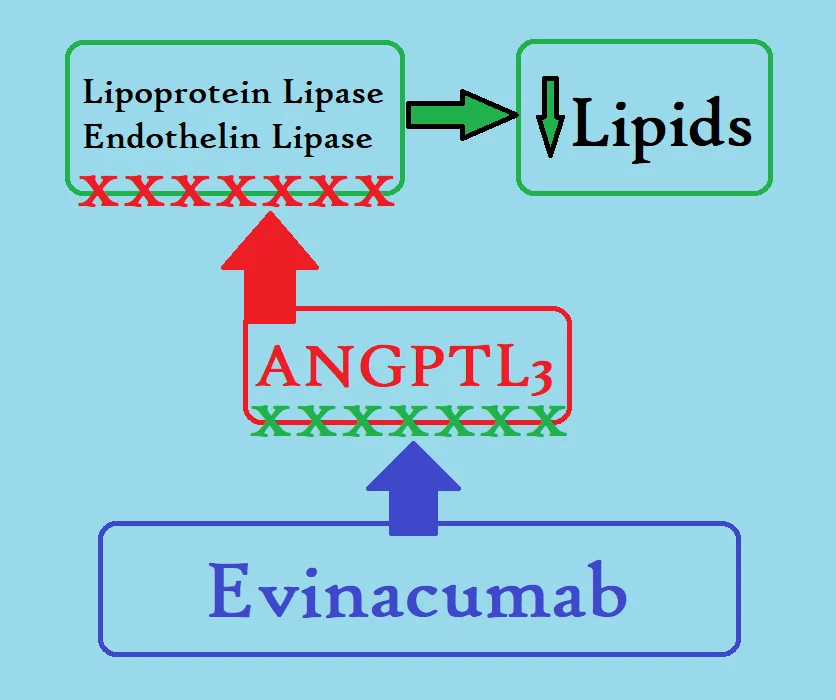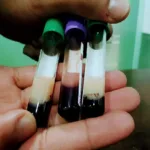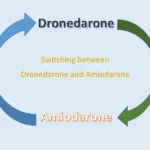Drug Name: Evinaucumab
Brand Name: Evkeez
Manufacturer: Regeneron
Date of Approval: 11th Feb 2021
Primary Indications: Treatment of Homozygous Familial Hypercholesterolemia [Ref]
HoFH (Homozygous Familial Hypercholesterolemia) is a genetic disorder where the affected person gets an abnormal LDL-R gene from both parents.
It is characterized by very high LDL and Triglyceride levels and early onset of cardiovascular diseases compared to Heterozygous Familial Hypercholesterolemia (HeFH).
Here is a table comparing HoFH and HeFH:
Lipids | HoFH | HeFH |
| LDL | Very high levels due to mutations in both copies of the LDLR gene (>450 mg/dl) | High levels due to mutations in one copy of the LDLR gene or other genes related to cholesterol metabolism (>190 mg/dl) |
| HDL | It can be normal or high. | It can be normal or slightly low |
| VLDL | It may be elevated, but not typically to the same extent as LDL | Typically normal |
| Chylomicrons | Levels may be elevated, but not to the same extent as LDL | Typically normal |
| Triglycerides | Levels can be high | Levels can be normal or slightly elevated |
| Cardiovascular Diseases | Very high risk of premature cardiovascular disease, including heart attacks, strokes, and other complications at an early age (<30) | High risk of cardiovascular disease, but the risk is generally lower than that of HoFH |
| You may also like to read: |
Who can be prescribed Evinacumab (Evkeeza):
The FDA has approved Evinacumab (Evkeeza) for all adults and children who are at least 12 years of age and diagnosed with HoFH (homozygous familial hypercholesterolemia).
The drug is intended to lower LDL cholesterol. It should be used in combination with other LDL-lowering drugs including statins, PCSk-9 inhibitors, and Lomitapide in particular.
However, although it lowers LDL levels whether it lowers cardiovascular mortality or not is not known. In addition, whether Evinacumab (Evkeeza) is effective in other conditions in which LDL is high or not has not been studied.
| You may also like to read: |
Evinacumab (Evkeeza) Dose:
The recommended dose is 15 milligrams per kilogram of body weight. This is given through a vein by a healthcare provider over a period of one hour, once every four weeks.
If a dose is missed, it should be given as soon as possible, and the next dose should still be given four weeks after the previous one.
The level of LDL cholesterol in the blood should be checked by a doctor when necessary. The drug may start to lower LDL cholesterol as early as two weeks after starting treatment.
| You may also like to read: |
How to administer Evinacumab (Evkeeza):
Preparing the Injection:
Calculate the dose and volume based on the patient’s body weight. The solution should be visually checked for clarity and particulate matter before use.
The EVKEEZA vials are for single use only and do not contain preservatives, so an aseptic technique should be used when preparing them.
The solution should not be shaken and must be diluted with a maximum of 250 ml of either 0.9% Sodium Chloride Injection or 5% Dextrose Injection.
The diluted solution should be used immediately after preparation or stored in the refrigerator for up to 24 hours or at room temperature for up to 6 hours. Do not freeze the solution.
Administering the injection:
Before administering EVKEEZA, allow the diluted solution to reach room temperature if refrigerated. The diluted solution should be administered via IV infusion over 60 minutes using a sterile IV line with a 0.2-micron to 5-micron filter.
Do not mix other medications with EVKEEZA or use the same infusion line to administer other medications at the same time.
If the patient experiences any adverse reactions, such as hypersensitivity or infusion reactions, the rate of infusion may be slowed, interrupted, or discontinued. EVKEEZA can be given at any time, regardless of lipoprotein apheresis.
| You may also like to read: |
Who Should Not Receive Evinacumab (Evkeeza)?
Allergic reactions:
Evinacumab is contraindicated in patients who are allergic to the drug or its components. Allergic reactions may occur and can manifest as hives, urticaria, local reactions, or very severe and life-threatening reactions including angioedema and anaphylaxis.
All patients should receive the infusion in a hospital setting. Patients receiving the drug should be monitored for serious reactions. In case a reaction occurs, it should be managed promptly and patients should not be given the drug again.
Fetal Toxicity:
The drug is toxic to the human fetus when exposure occurs during the period of organ development. The manufacturer recommends avoiding it in pregnancy and women who may become pregnant.
Contraceptives should be used during the treatment by women who may become pregnant. It is recommended to continue using contraception for at least five months after the last infusion.
| You may also like to read: |
Side effects of Evinacumab (Evkeeza):
Side effects that were reported during the trials were generally mild. These include:
Most common Side effects:
Flu-like symptoms, runny nose, nasopharyngitis and nasal congestion, dizziness, nausea, constipation, abdominal pain, pain in the limbs, and fatigue.
Mild infusion reactions were common, however, serious hypersensitivity reactions were also noted.
| You may also like to read: |
Evinacumab (Evkeeza) Use in Pregnant and Nursing Mothers:
EVKEEZA may harm fetuses when given to pregnant patients, based on animal studies. Human data is insufficient to evaluate the risk of birth defects or other problems for mothers or fetuses.
Evinacumab-dgnb has the potential to be transmitted from mother to fetus. The background risk of birth defects and miscarriage for the indicated population is unknown. Pregnant women should be advised of the potential risk to a fetus.
There are no data available on the presence of evinacumab-dgnb in human or animal milk. The effects of exposure to evinacumab-dgnb on breastfeeding infants are unknown.
| You may also like to read: |
Mechanism of Action of Evinacumab:
Evinacumab-dgnb lowers plasma LDL, HDL, and Triglycerides. It is a monoclonal antibody that targets a protein called ANGPTL3 (angiopoietin-like protein).
ANGPTL3 is a protein that inhibits the good enzymes lipoprotein lipase and endothelin lipase. When these enzymes are inhibited, LDL and other cholesterol molecules are no more broken down and their levels in the blood go up.
Evinacumab basically rescues lipoprotein lipase and endothelin lipase by blocking the bad protein ANGPTL3.
Unlike most other lipid-lowering drugs which are dependent on LDL receptors, the action of Evinacumab is not dependent on LDL receptors.
Evinacumab MOA is explained in the photo here:

Pharmacokinetics:
Parameter | Description |
| Steady-state | Reached after 4 doses |
| Metabolism | Degraded into small peptides and amino acids via catabolic pathways |
| Excretion | Not likely to undergo renal excretion |
| Factors with no effect on exposure | Age, gender, body weight, and race |
| Pediatric patients | Steady-state trough and end-of-infusion concentrations in a range of adult patients |
| Renal impairment | Comparable trough concentrations at steady-state in mild/moderate impairment vs. normal function |
| Hepatic impairment | No data available |
| You may also like to read: |




